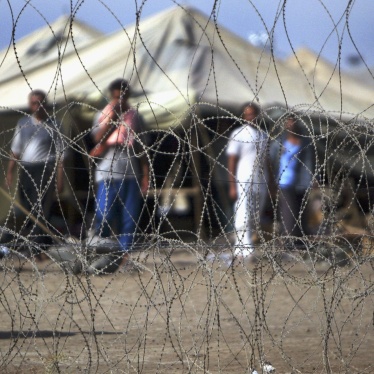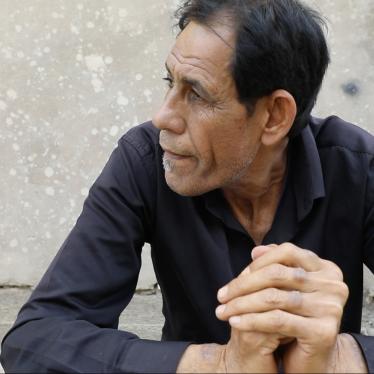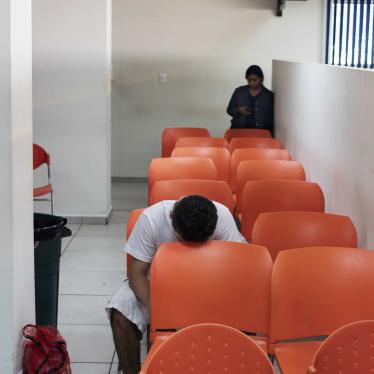Forced standing and sleep deprivation
• Former Israeli Prime Minister Menachem Begin described in his memoirs being subjected to sleep deprivation in a Soviet prison in the 1940's: “In the head of the interrogated prisoner a haze begins to form. His spirit is wearied to death, his legs are unsteady, and he has one sole desire: to sleep, to sleep just a little, not to get up, to lie, to rest, to forget. . . . Anyone who has experienced this desire knows that not even hunger or thirst are comparable with it. . . . I came across prisoners who signed what they were ordered to sign, only to get what the interrogator promised them. He did not promise them their liberty. He promised them -- if they signed -- uninterrupted sleep!”
• The Washington Times reported last year that “some of the most feared forms of torture” cited by survivors of the North Korean gulag “were surprisingly mundane: Guards would force inmates to stand perfectly still for hours at a time, or make them perform exhausting repetitive exercises such as standing up and sitting down until they collapsed from fatigue.” (“Nightmares from the North; Korean son recounts life in dictatorship,” Benjamin Hu, The Washington Times, April 30, 2004.)
• In The Gulag Archipelago, Aleksander Solzhenitsen describes Soviet interrogations including cases of forced standing and sleep deprivation: “Then there is the method of simply compelling a prisoner to stand there.” Among other techniques used to break prisoners was forcing them to stay in a fixed position for an extended period of time: “In the Novocherkassk NKVK, Yelena Strutinskaya was forced to remain seated on a stool in the corridor for six days in such a way that she did not lean against anything, did not sleep, did not fall off, and did not get up from it.” Solzhenitsen also describes sleep deprivation being used on a prisoner named Anna Skripnikova in 1952: “[The] Chief of the Investigative Department of the Ordzhonikidze State Security Administration, said to her: “The prison doctor reports you have a blood pressure of 240/120. That’s too low, you bitch! We’re going to drive it up to 340 so you'll kick the bucket, you viper, and with no black and blue marks; no beatings; no broken bones. We'll just not let you sleep.’ And if, back in her cell, after a night spent in interrogation, she closed her eyes during the day, the jailer broke in and shouted: ‘Open your eyes or I'll haul you off that cot by the legs and tie you to the wall standing up.’” Elsewhere, Solzhenitsen writes: “Sleeplessness . . . befogs the reason, undermines the will, and the human being ceases to be himself, to be his own ‘I.’”
• In 1951, William N. Oatis was taken into Czech custody on charges of espionage while working as bureau chief for the Associated Press in Prague. He was innocent, but signed a false confession after being held and interrogated for six days. He was kept awake for over 42 hours, after which he signed the confession. He described his ordeal in Life Magazine. “[After 40 hours of sleep deprivation:] The room was whirling. I could not seem to make my eyes—or my brain—focus. I wanted time to think. I knew that this was a great and perhaps fatal step: if I signed, I would be confessing to something I had not done. I wanted to consider what I might be doing to myself by signing this document—and what I might be doing by refusing to sign it. But there was something else I wanted more. That was sleep. I had been awake 42 hours. Through that time, almost without letup, I had been questioned, browbeaten, and berated. I was limp with fatigue. My eyes kept falling shut, my mind kept blanking out. My future might lie in the balance, but the future must take care of itself. Tomorrow was another day. Tonight was what bore me down. I must end it somehow. There seemed only want way to do that, and that was to sign the confession. So I signed it. The 42 hours had finished me. I had gone to embassy people for help in my unofficial reporting, a procedure followed by journalists everywhere, but now I had confessed the opposite. I had signed a paper saying I went to the embassy to deliver information rather than to obtain it. I had not chosen to abandon the truth -- the choice had been made for me. . .”
• In The Great Terror, a book about the Soviet Union during Stalin’s rule, author Robert Conquest describes detainees being subjected to forced standing and sleep deprivation: “Interrogation usually took place at night and with the accused just roused -- often only fifteen minutes after going to sleep. The glaring lights at the interrogation had a disorientating effect.” Conquest quotes a Czech prisoner, Evzen Loebl, who described “having to be on his feet eighteen hours a day, sixteen of which were devoted to interrogation. During the six-hour sleep period, the warder pounded on the door every ten minutes, upon which he had to jump to attention and report, ‘Detainee No. 1473 reports: strength one detainee, everything in order.’ He was, that is, ‘awakened thirty or forty times a night.’ If the banging did not wake him, a kick from the warder would. After two or three weeks, his feet were swollen and every inch of his body ached at the slightest touch; even washing became a torture.”
• In Gulag: A History, another Soviet history by Anne Applebaum describes the “‘standing test’ -- prisoners were told to stand, facing the wall, without moving. . . . One, Engraver P., over fifty years of age and heavily built, had stood for six and a half days. He was not given food or drink and was not allowed to sleep.” Applebaum continues: “Most commonly, however, prisoners were simply deprived of sleep: this deceptively simple form of torture--which seemed to require no special advance approval--was known to prisoners as being put ‘on the conveyor,’ and it could last for many days or weeks. The method was simple: prisoners were interrogated all night, and afterward forbidden to sleep during the day.”
Exposure to cold
• Robert Conquest, the author of the Great Terror, cited above, quotes a Polish prisoner held in a Soviet camp in 1945, talking about the effects of sleep deprivation and hunger: “Cold, hunger, the bright light and especially sleeplessness. The cold is not terrific. But when the victim is weakened by hunger and sleeplessness, then the six or seven degrees above the freezing point make him tremble all the time. . . . After two or three weeks, I was in a semi-conscious state. After fifty or sixty interrogations with cold and hunger and almost no sleep, a man becomes like an automaton -- his eyes are bright, his legs swollen, his hands trembling. In this state, he is often convinced he is guilty.”
• Applebaum writes: “Those who remained stubborn and refused to confess . . . could be placed in a specially harsh punishment cell, very hot or very cold, as was the memoirist Hava Volovich, who was also being deprived of sleep by her interrogator at the time: 'I will never forget that first experience of prison cold. I can’t describe it; I'm not capable of it. I was pulled one way by sleep, the other by cold.’”
Waterboarding
• “Waterboarding,” in which interrogators immerse or pour water over a detainee’s face until he believes he will suffocate or drown, is intended to cause a victim to believe he is about to die, and therefore amounts to a mock execution. It was used extensively in Central and South America in the 1970s and 1980s and has been called “torture” by several domestic and human rights courts.
• The National Commission on Political Imprisonment and Torture, in Chile, issued a report in November, 2004 describing the use of the “submarino” in the early 1970s. One account reads: “Man, detained in September 1973: . . . [T]hey put cotton in both eyes, then adhesive tape on top, and a black hood tied at the neck, they tied my feet and hands tightly and they plunged me in one of those 250 liter barrels of oil which contained ammonia, urine, excrement, and sea water; they submerged me like this until my breath couldn’t hold out, nor my lungs, and they kept repeating this again and again, along with blows and questions, this was what they called, in [the world of] torture, the famous submarine.”
U.S. State Department Criticism of Techniques Across the World
The U.S. State Department has condemned as torture or other inhuman treatment many of the techniques that have allegedly been used by the CIA in Iraq, Afghanistan, and at secret detention sites in other countries. Listed below are some of the countries criticized for using these interrogation methods during 2000, 2001, and 2002 in the State Department's annual “Country Reports on Human Rights Practices.”
Country and Methods Used
Burma: According to State Department country reports, the Burmese military government "routinely subjected detainees to hard interrogation techniques designed to intimidate and disorient." The techniques listed include being forced to squat or remain in uncomfortable periods for long periods of time, and, according to the 2000 and 2001 country reports, sleep and food deprivation and prolonged questioning under bright lights.
Egypt: The country reports cited the stripping and blindfolding of prisoners among the principal methods of torture used by Egyptian authorities.
Eritrea: The State Department reported that the Eritrean government "committed serious human rights abuses" and torture techniques including being subjected to prolonged sun exposure in high temperatures and tying of hands and feet for extended periods.
Iran: According to country reports, common methods of torture used against political opponents in Iran were sleep deprivation and "suspension for long periods in contorted positions."
Iraq: Iraqi security services under Saddam Hussein regularly used food and water deprivation as a form of torture, according to the country reports.
Jordan: The State Department reported that Jordanian police and security forces were alleged to engage in acts of torture, including the use of sleep deprivation and solitary confinement.
Israel: In the country reports, the State Department wrote that Israeli human rights groups reported that Israeli defense forces continued to use methods of interrogation prohibited by a 1999 decision by Israel's High Court. Prior to this decision, security officers were permitted to use "moderate and physical and psychological pressure" during questioning. One example of the "pressure" used was violent shaking. The State Department stated that these practices "often led to excesses."
Libya: According to the State Department, Libyan authorities commonly chained detainees to walls for hours and deprived them of food and water.
Pakistan: In the country reports, the State Department noted that prolonged isolation and denial of food or sleep were common torture methods.
Saudi Arabia: The State Department noted that Saudi Arabian officials, primarily from the Ministry of the Interior, used sleep deprivation as an interrogation tactic.
Tunisia: In the country reports, the State Department said that tactics such as food and sleep deprivation or confinement to a tiny, unlit cell were commonly used in Tunisia.
Turkey: The State Department stated that torture is a regular practice in Turkey. According to the 2001 country report, some of the methods of torture employed by Turkish security forces included prolonged standing and isolation.
|
Fact Sheet
Descriptions of Techniques Allegedly Authorized by the CIA
Your tax deductible gift can help stop human rights violations and save lives around the world.
Region / Country
Topic
Most Viewed
-
December 15, 2024
Sudan: Fighters Rape Women and Girls, Hold Sex Slaves

-
November 8, 2017
“Everyone Blames Me”

-
December 14, 2017
“They Were Men in Uniform”

-
August 29, 2024
South Korea’s Digital Sex Crime Deepfake Crisis

-
April 9, 2025
South Sudan: Incendiary Bombs Kill, Burn Civilians




